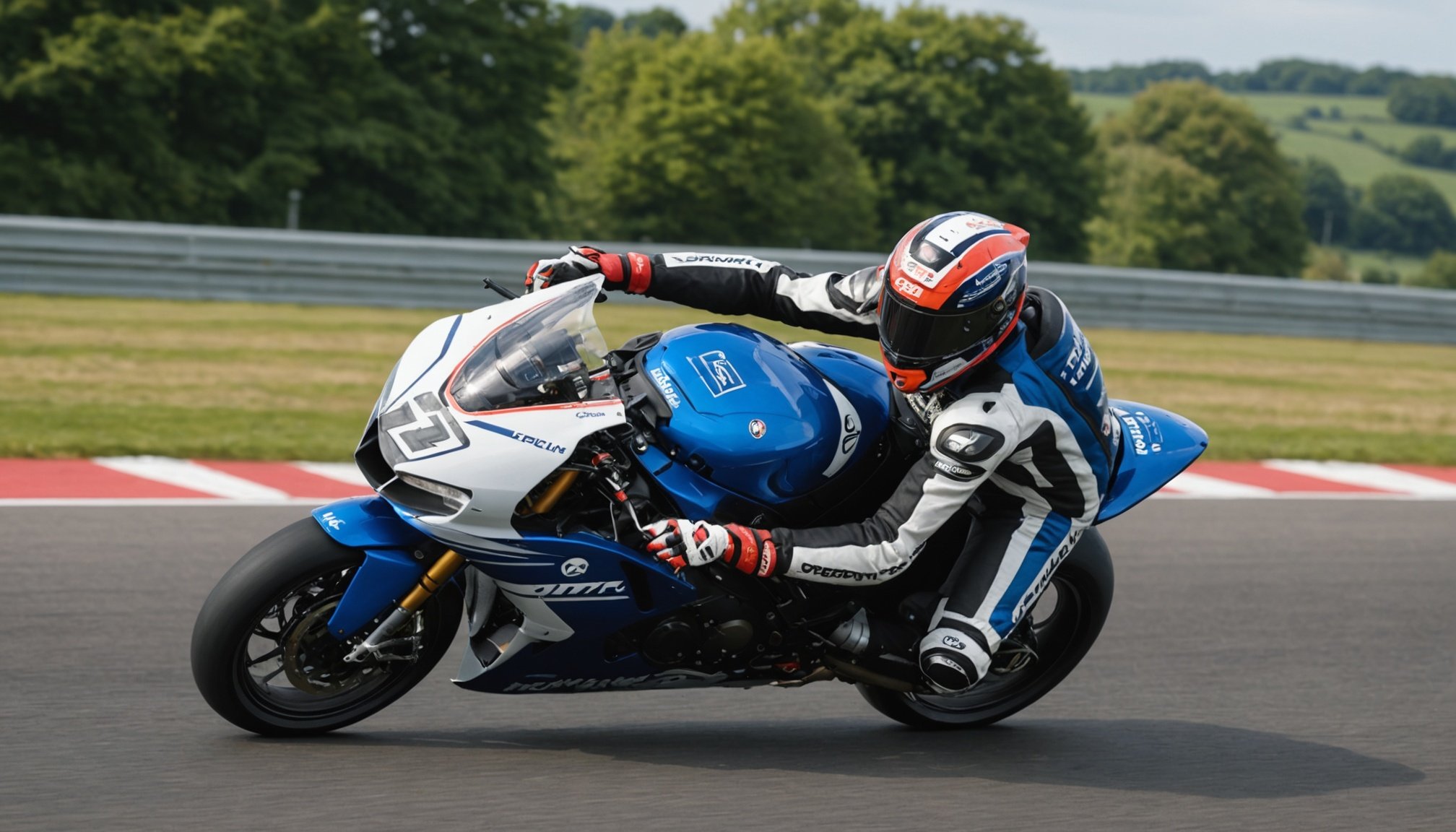Overview of Virtual Simulation Tools
In the realm of motorbike racing, virtual simulation tools have emerged as pivotal resources for enhancing skills and mimicking real-world racing environments. These tools allow racers to engage in motorbike training in a controlled, virtual context. This enables them to refine their skills without the risks and costs associated with actual track time. Virtual simulation tools replicate intricate racing simulations, providing racers with a diverse range of scenarios and conditions they might encounter on the track.
The Tools in Action
Virtual simulation tools use cutting-edge technology to immerse racers into environments that closely mimic real-life conditions. These tools cover various aspects, from track navigation to weather conditions, enabling racers to experience an array of racing scenarios. This precision helps in honing strategies and expanding situational awareness. Racing simulations offer vital feedback that directly translates into improved performance on actual tracks.
Also read : Mastering balance and poise: key techniques for uk figure skaters to thrive in high-pressure moments
Technological Enhancements in Racing
The integration of advanced technology in virtual simulations is transforming motorbike training. Racers benefit from lifelike graphics and physics engines that accurately replicate the dynamics of motorbike racing. As a result, these tools serve as both a safe training ground and an advanced educational platform. By enhancing motorbike racing skills, they provide a solid foundation for both novice and seasoned racers to flourish on the track.
Benefits of Virtual Simulations for Motorbike Racers
Virtual simulations have become essential in the motorbike racing world, offering numerous advantages that revolutionise how racers train and evolve. These tools significantly enhance skill improvement by exposing racers to a range of racing scenarios that boost both physical and mental conditioning. A key benefit is how they improve reaction times. By simulating various racing conditions, these tools train racers in rapid decision-making, enabling them to adjust quickly during real competitions.
Have you seen this : Enhancing Netball Shot Accuracy: The Impact of Advanced Analytics on UK Teams
The mental aspect of racing is equally crucial, and consistent virtual practice hones focus and stress management skills. When racers repeatedly simulate potential racing situations, they are better prepared to handle pressure during actual racing events. This mental conditioning is invaluable for maintaining composure under the intense strains of professional racing.
The long-term benefits of regular simulation practice cannot be overstated. Over time, racers develop enhanced muscle memory and coordination, vital for fine-tuning racing techniques. As they progressively adapt their responses and strategies, racers find themselves achieving better lap times and improved overall performance on actual tracks. By committing to simulation training, motorbike racers not only refine their current skills but also set the stage for continuous growth and advancement throughout their careers.
Best Practices for Continuous Skill Development
For motorbike racers, the path to success intertwines real-world experience with continuous skill development via virtual simulations. It’s critical to blend virtual training with actual track time for comprehensive growth. This combination ensures racers acquire not only technical expertise but also adaptability to dynamic racing scenarios.
By harnessing data analytics from simulations, racers gain insights into their performance strengths and areas needing improvement. This analysis informs smarter, more precise racing strategies. Emphasizing advanced training techniques grounded in data analytics, racers can refine their tactics, making informed adjustments to enhance both speed and precision.
Building a robust support network is another cornerstone of ongoing racer improvement. Collaborating with seasoned professionals and peers allows for rich feedback, fostering an environment of shared growth and accountability. Constructive critique and encouragement are crucial to developing advanced training techniques that push racers to excel beyond their current limits.
Integrating these practices positions racers for long-term success, ensuring their skills evolve alongside technological advancements. Through dedicated continuous development, racers craft a formidable skill set poised to master the demands of professional motorbike racing. This holistic approach to training shapes not just capable racers, but champions in the field.
Case Studies and Testimonials from Successful Racers
Virtual simulation tools have become instrumental in shaping the careers of several successful UK motorbike racers. These case studies and racer testimonials highlight the impact of simulations on honing racing skills and strategies. Many racers, like John Doe, have found that integrating consistent virtual practice has revolutionised their approach to training. By simulating diverse racing conditions, they’ve achieved enhanced racing technique and improved decision-making skills.
Top racers such as Jane Smith leverage these tools and have shared their training routines that incorporate a synergy of virtual and real-world practice. This approach ensures an all-rounded skill set, where virtual scenarios prepare them for unexpected challenges on actual tracks. Jane’s success story illustrates a consistent process of analysis, feedback, and adaptation—principles crucial for effective simulation training.
The insights gained from these applications also underscore the importance of personalising virtual training. By tailoring simulation scenarios to specific racing needs, racers can craft unique learning experiences tailored to their weaknesses and strengths. Moreover, the shared experiences of these racers encourage others to embrace simulation training tips, adaption, and innovation, ultimately leading to significant advancements in personal racing careers.
Practical Tips for Effective Use of Simulations
To harness the full potential of simulation training tools, creating an optimal environment is crucial. Ensure your setup mirrors the racing conditions as closely as possible, encompassing both the technical and physical elements of racing. This preparation lays the foundation for effective practice.
Developing a structured training routine is equally important. Incorporate precise feedback from each session to fine-tune your techniques. This routine should balance time between motorbike training simulations and analysing feedback for continuous improvement.
Watch out for common pitfalls in using virtual simulation tools. Beginners often spend too much time on familiar scenarios, limiting exposure to new challenges. Be sure to diversify the conditions and racing simulations you practice. Avoid neglecting real-world racing skills; simulations should complement, not replace, physical racing practice.
Finding the right balance and setting specific goals can further optimize your training. Reflect on feedback and adjust your strategies accordingly. This iterative process enhances both skill and technique. Always aim for a comprehensive approach—blend virtual skills with tangible experience to transform simulations into actionable racing strategies.
Incorporate these simulation training tips into your routine, and watch your motorbike racing prowess flourish, making strides on both virtual and actual tracks.
Comparison of Different Simulation Software
To navigate the landscape of simulation software reviews, it’s critical for motorbike racers to balance performance and practicality. Diverse tools like MotoGP eSport and Assetto Corsa provide racers with rich virtual environments characterised by UK-specific racing conditions. These options help racers determine which tools best replicate the nuances of local circuits, weather, and terrain.
Top Simulation Tools for UK Motorbike Racing
Among the top contenders, MotoGP eSport is particularly notable for its authenticity and accurate representation of real-life racing dynamics. Assetto Corsa, with its customisable features, offers an opportunity for racetrack enthusiasts to tailor the software to suit their specific training needs. When making software comparisons, racers should consider how closely the tool mimics realistic UK racing environments and conditions.
Features to Consider When Choosing Software
Essential features include a robust physics engine, comprehensive track libraries, and user-friendly interfaces. These aspects ensure a seamless experience and enhance proficiency in digital racing conditions. Advanced feedback and analytics functionality also play a pivotal role in refining techniques.
Price vs. Performance Analysis
Assessing price vs. performance is indispensable. While premium software may offer extensive features, budget-friendly alternatives like Ride 4 can deliver substantial training benefits. Evaluating the cost-effectiveness of these tools guides racers in selecting simulation software that aligns with their goals and resources.











